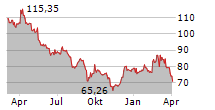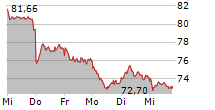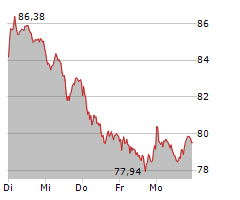The "Electric Two-Wheeler Market Size and Share Analysis Growth Trends and Forecast Report 2025-2033" report has been added to ResearchAndMarkets.com's offering.
The Electric Two Wheeler Market is expected to reach US$ 375.82 billion 2033 from US$ 228.20 billion in 2024, with a CAGR of 10.44% from 2025 to 2033
Rising gasoline prices, environmental consciousness, government incentives, better battery technology, cost-effectiveness, urbanization, the growing need for environmentally friendly transportation, and changing customer preferences are all contributing factors to the growth of the electric two-wheeler market.
Rising fuel prices, environmental concerns, and government incentives supporting clean energy transportation are some of the factors driving the growth of the electric two-wheeler market. Electric vehicles are becoming more widely available because to improvements in battery technology that have increased range and decreased costs. The need for affordable, effective commuting choices is increased by growing urbanization and traffic congestion.
Further propelling market expansion are consumer preferences for environmentally friendly products and the increased emphasis on sustainability. The combination of these elements fosters an atmosphere that is conducive to the adoption of electric two-wheelers.
Growth Drivers for the Electric Two Wheeler Market
Cycling's Growing Popularity in Fitness and Recreational Activities
The market for electric two-wheelers is growing due in large part to the increase in riding for leisure and exercise. An article claims that there are approximately 1 billion bicycles in use worldwide, demonstrating how popular riding is as a recreational and fitness activity. Because of its many health advantages and the growing emphasis on living an active lifestyle, cycling has become more and more popular as a recreational and fitness activity.
Because of their adaptability, e-bikes may be used by people of all fitness levels, encouraging more people to include riding in their exercise regimens. The increased range and battery life of electric two-wheelers have led to an increase in their use for recreational purposes. Without having to worry about becoming tired or putting in too much physical effort, riders can travel farther and take part in outdoor activities. This contributes to the expansion of the electric two-wheeler market by creating new opportunities for weekend getaways, picturesque excursions, and environmental exploration.
Growing Interest in Eco-Friendly Automobiles
The industry is being positively impacted by the growing demand for environmentally friendly automobiles. The International Energy Agency (IEA) reports that sales of electric vehicles (EVs) increased by 55% from 2021 to 10 million units worldwide in 2022. Reducing carbon emissions and lessening the impact of transportation on the environment have become more important as environmental issues have gained more attention. An environmentally responsible and sustainable substitute for traditional gasoline or diesel-powered cars are electric two-wheelers.
Concerns About Traffic Congestion Are Growing
The demand for the goods is being greatly impacted by the growing traffic congestion. According to statistics, the International Transport Forum calculates that highly congested urban economies lose an average of 1% of their GDP due to traffic congestion. Commuting times and dissatisfaction with traffic congestion have increased as metropolitan areas becoming increasingly populated with cars. A useful way to go more effectively through crowded streets is with an electric two-wheeler. Because they are small and incredibly agile, electric two-wheelers make it simple for riders to navigate around traffic and discover alternate routes. They are a desirable option for urban commuters who want to escape the delays and annoyances brought on by traffic congestion because they can get to their destinations more quickly and avoid lengthy lines of stationary cars. Electric two-wheelers' ease of use and maneuverability in negotiating traffic jams shorten commutes and lessen the anxiety and annoyance that come with being stopped in traffic. Because of this, more people are choosing to travel by electric two-wheelers, which is increasing the demand for these vehicles.
Challenges in the Electric Two Wheeler Market
Limited Charging Infrastructure
One major obstacle facing the market for electric two-wheelers is the lack of adequate charging infrastructure. Customers' willingness to purchase electric vehicles is limited by range anxiety brought on by inadequate charging facilities, particularly in rural or underdeveloped locations. Riders may have to wait a long time to recharge if there are no fast-charging options available. Public and private charging networks must be expanded in order to meet the rising demand for electric two-wheelers and guarantee their widespread use.
Regulatory Hurdles
The market for electric two-wheelers is challenged by regulatory barriers because different regions have different laws. Diverse safety requirements, battery laws, and incentives can perplex producers and customers, which will impede market expansion. Furthermore, certain areas have unclear laws governing the manufacture, importation, and use of electric vehicles, which makes it challenging for businesses to expand. Unified international laws and regulations that can expedite production, sales, and infrastructure development are required to create a more encouraging atmosphere.
Electric Two Wheeler Market Overview by Regions
Due to government incentives and urbanization, the market for electric two-wheelers is expanding significantly in Asia, particularly China and India. Demand is rising in Europe as a result of sustainable transportation projects and environmental legislation. With increased environmental consciousness and the construction of infrastructure, adoption is expanding more slowly in North America. There are still issues with regional differences in regulations and infrastructure.
Key Questions Answered in Report
1. How big is the electric two wheeler industry?
The global electric two wheeler market size was valued at US$ 50.13 billion in 2024 and is expected to reach US$ 122.54 billion in 2033.
2. What is the electric two wheeler industry growth rate?
The global electric two wheeler market is expected to expand at a compound annual growth rate (CAGR) of 10.44% from 2025 to 2033.
3. Who are the key players in electric two wheeler industry?
The top electric two wheeler companies are BMW AG, GOVECS AG, Hero Electric Vehicles Pvt. Ltd., Mahindra GenZe, Terra Motors Corporation, Vmoto Limited, Zero Motorcycles, Inc.
4. What are the factors driving the electric two wheeler industry?
The electric two-wheeler market is growing due to rising fuel costs, environmental awareness, government incentives, improved battery technology, cost-effectiveness, urbanization, increasing demand for eco-friendly transportation, and evolving consumer preferences.
5. Which Region held the largest market share in the electric two wheeler industry?
North America is expected to hold the largest market share in the industry.
6. What segments are covered in the electric two wheeler market report?
Type, Battery Type, Drive Type, Voltage and Countries segment are covered in this report.
Key Attributes:
| Report Attribute | Details |
| No. of Pages | 200 |
| Forecast Period | 2024 2033 |
| Estimated Market Value (USD) in 2024 | $50.13 Billion |
| Forecasted Market Value (USD) by 2033 | $122.54 Billion |
| Compound Annual Growth Rate | 10.4% |
| Regions Covered | Global |
Key Topics Covered:
1. Introduction
2. Research Methodology
3. Executive Summary
4. Market Dynamics
4.1 Growth Drivers
4.2 Challenges
5. Global Electric Two Wheeler Market
6. Market Share Analysis
6.1 Type
6.2 Battery Type
6.3 Drive Type
6.4 Voltage
6.5 Country
7. Type
7.1 Electric Motorcycles
7.2 Electric Scooters
8. Battery Type
8.1 Nickel Metal Hybride Batteries
8.2 Sealed Lead Acid Batteries
8.3 Lithium-Ion Batteries
9. Drive Type
9.1 Hub Drive Motor
9.2 Mid-Drive Motor
10. Voltage
10.1 36V
10.2 48V
10.3 60V
10.4 72V
10.5 Above 72V
11. Country
11.1 North America
11.1.1 United States
11.1.2 Canada
11.2 Europe
11.2.1 France
11.2.2 Germany
11.2.3 Italy
11.2.4 Spain
11.2.5 United Kingdom
11.2.6 Belgium
11.2.7 Netherlands
11.2.8 Turkey
11.3 Asia Pacific
11.3.1 China
11.3.2 Japan
11.3.3 India
11.3.4 Australia
11.3.5 South Korea
11.3.6 Thailand
11.3.7 Malaysia
11.3.8 Indonesia
11.3.9 New Zealand
11.4 Latin America
11.4.1 Brazil
11.4.2 Mexico
11.4.3 Argentina
11.5 Middle East Africa
11.5.1 South Africa
11.5.2 Saudi Arabia
11.5.3 UAE
12. Porter's Five Analysis
12.1 Bargaining Power of Buyers
12.2 Bargaining Power of Suppliers
12.3 Degree of Rivalry
12.4 Threat of New Entrants
12.5 Threat of Substitutes
13. SWOT Analysis
13.1 Strength
13.2 Weakness
13.3 Opportunity
13.4 Threat
14. Company Analysis
14.1 Overview
14.2 Key Persons
14.3 Recent Development Strategies
14.4 Product Portfolio
14.5 Financial Insights
For more information about this report visit https://www.researchandmarkets.com/r/lr1xs
About ResearchAndMarkets.com
ResearchAndMarkets.com is the world's leading source for international market research reports and market data. We provide you with the latest data on international and regional markets, key industries, the top companies, new products and the latest trends.
View source version on businesswire.com: https://www.businesswire.com/news/home/20250520346839/en/
Contacts:
ResearchAndMarkets.com
Laura Wood, Senior Press Manager
press@researchandmarkets.com
For E.S.T. Office Hours Call 1-917-300-0470
For U.S./ CAN Toll Free Call 1-800-526-8630
For GMT Office Hours Call +353-1-416-8900



